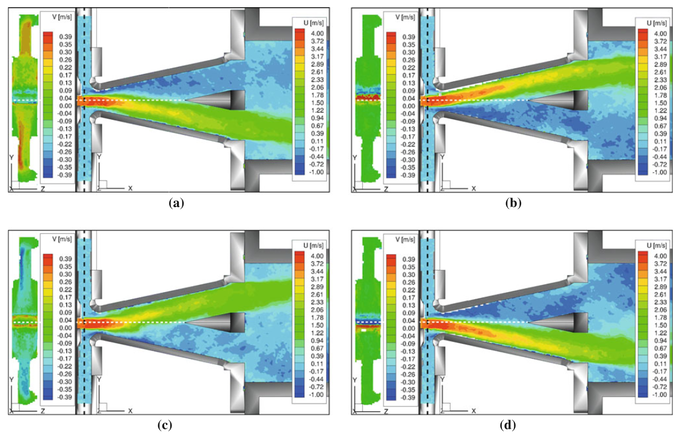Velocity and thermometry in technical flows
Waltraud Buchenberg
4D MRI measurements in technical flows allows unprecedented access to the internal workings of technical devices which are often optically opaque. An example of flow distributions in a bi-stable fluidic oscillator at several stages in the oscillation cycle is shown in the image below (taken from [1]). Good agreement was found with laser Doppler anemometry, and new insights into the flow mechanisms within the oscillator were gained due to the comprehensive nature of the flow measurements.

As well as measuring flow fields in technical set-ups, it is of interest to simultaneously measure temperature fields. This can be achieved by using various MRI techniques, such as the diffusion coefficient, T1 and T2 relaxation times and proton resonance frequency method amongst others [2]. Using MRI to measure temperature in technical flows presents a unique set of problems and so many of the techniques which have been developed for in vivo measurements cannot be directly applied.
References
[1] Phase-locked 3D3C-MRV measurements in a bi-stable fluidic oscillator. Wassermann et al, Experiments in Fluids March 2013, 54:1487
[2] MR thermometry. Rieke V and Butts Pauly K, J Magn Reson Imaging. 2008 Feb;27(2):376-90. doi: 10.1002/jmri.21265
Prof. Dr. Dr. h.c. Jürgen Hennig
Tel.: +49 761 270-74120
University Medical Center Freiburg
Dept. of Radiology · Medical Physics
Killianstr. 5a
79106 Freiburg

